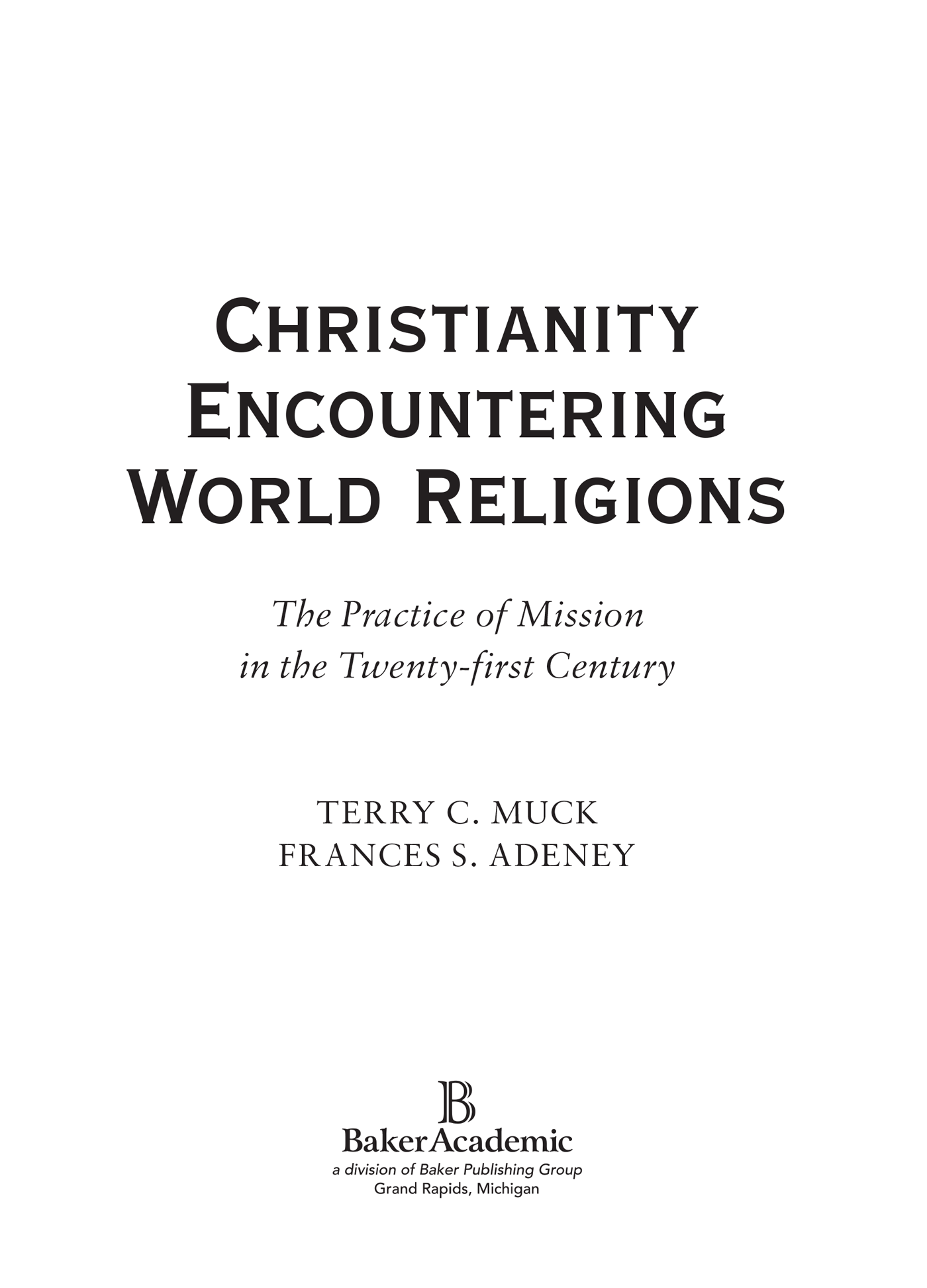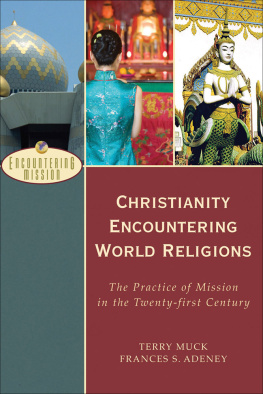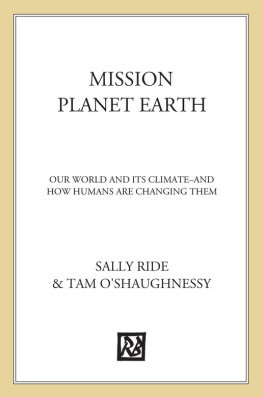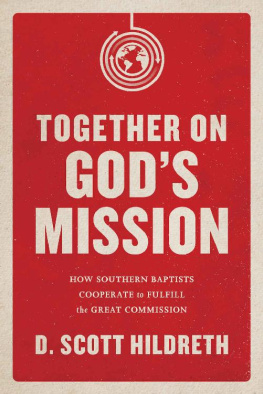
A. Scott Moreau, series editor
Also in the series:
Introducing World Missions: A Biblical, Historical, and Practical Survey, Second Edition
A. Scott Moreau, Gary R. Corwin, and Gary B. McGee
The Changing Face of World Missions: Engaging Contemporary Issues and Trends
Michael Pocock, Gailyn Van Rheenen, and Douglas McConnell
Encountering Missionary Life and Work: Preparing for Intercultural Ministry
Tom Steffen and Lois McKinney Douglas
Encountering Theology of Mission
Craig Ott and Stephen J. Strauss, with Timothy C. Tennent
Developing a Strategy for Missions
John Mark Terry and J. D. Payne
Effective Intercultural Communication
A. Scott Moreau, Evvy Hay Campbell, and Susan Greener

2009 by Terry C. Muck and Frances S. Adeney
Published by Baker Academic
a division of Baker Publishing Group
P.O. Box 6287, Grand Rapids, MI 49516-6287
www.bakeracademic.com
Ebook edition created 2011
Ebook corrections 02.17.2015
All rights reserved. No part of this publication may be reproduced, stored in a retrieval system, or transmitted in any form or by any meansfor example, electronic, photocopy, recordingwithout the prior written permission of the publisher. The only exception is brief quotations in printed reviews.
Library of Congress Cataloging-in-Publication Data is on file at the Library of Congress, Washington, D.C.
ISBN 978-1-4412-0526-1
Unless otherwise indicated, Scripture is taken from the Holy Bible, New International Version. NIV. Copyright 1973, 1978, 1984 by Biblica, Inc. Used by permission of Zondervan. All rights reserved worldwide. www.zondervan.com
Scripture quotations labeled KJV are from the King James Version of the Bible.
Scripture quotations labeled NASB are from the New American Standard Bible, copyright 1960, 1962, 1963, 1968, 1971, 1972, 1973, 1975, 1977, 1995 by The Lockman Foundation. Used by permission. www.lockman.org
Scripture quotations labeled NRSV are from the New Revised Standard Version of the Bible, copyright 1989, by the Division of Christian Education of the National Council of the Churches of Christ in the United States of America. Used by permission. All rights reserved.
Scripture quotations labeled TNIV are from the Holy Bible, Todays New International Version. TNIV. Copyright 2001, 2005 by Biblica, Inc. Used by permission of Zondervan. All rights reserved worldwide. www.zondervan.com
Contents
Introduction
W hat is the Christian responsibility to people who already believe in and belong to another religion? How should Christians witness to people who are Buddhist, or Hindu, or Muslim, or members of some other religion?
We believe that Christian responsibility begins with giving witness to what God has done through Jesus Christ to offer us the gift of salvation. We believe that giftive mission is the form that witness should take in the twenty-first century. This book is an explanation of and an argument for giftive mission. This approach is necessary because our culture at large gives radically different answers to the question of what the Christian responsibility to people of other religions is.
At one end of the spectrum of these answers is the do nothing response. According to this view, Christians should do nothing regarding the spiritual disposition of nonbelievers. If Christians have any responsibility to adherents of non-Christian religions, it begins and ends with concern for the simple requirements of human well-being: food, water, clothing, shelter, peace, and justice.
At the other end of the spectrum of answers is the wipe them out response. Christians should spare no energy in eradicating the non-Christian religions of the world. Non-Christian religions and the people who follow them are demonic. We are fully justified in using whatever means necessary to accomplish this goal, including political power and warfare.
Like most end-of-the-spectrum answers to such questions, there is little subtlety to either the do nothing or the wipe them out responses. Some mission organizations offer more subtle versions of these responses, and many if not most take positions well distanced from either extreme. We will explore many of these positions in this book. But what is surprising, even alarming, in todays climate of tension among religions is that extreme, end-of-the-spectrum answers increasingly seem to be considered plausible by more and more people. Intellectually these positions may seem to be reductive stereotypes. Empirically, however, they are not. People believe them and act on them, to little positive effect and a growing list of negative effects.
We Christians desperately want to think we are still having a positive effect with traditional mission efforts. And it is not hard to produce evidence that seems to support that belief. Never before have more missionaries been sent to foreign fields: American missionaries, European missionaries, Korean missionaries, Indian missionaries. Tens of thousands of people convert to Christianity each year as a result of these efforts. Christianity is still the largest religion in the world, with almost two billion members.
But what do these numbers mean? Consider: never before have more Buddhist, Hindu, and Muslim missionaries been sent to foreign fields. Tens of thousands of people convert to Buddhism and Islam each year as a result of these efforts. Islam grew faster than Christianity in the twentieth century, and Buddhism has become a viable religion in both Europe and North America.
In fact, when Christian growth numbers are considered as a percentage of world population, for the last one hundred years the results of the Christian mission movement have remained stagnant. According to David Barrett and Todd Johnson in World Christian Trends , in the year 1900 Christians made up 34.5 percent of the worlds population; in the year 2000, Christians made up 33 percent of the worlds population (2001, 4).
And what do we do about these realities? We talk about the places Christianity is still growing and ignore those where it is either stagnant or in decline. We wax eloquent about growth that cant be measured or confirmedhouse churches in China and background believers in the Muslim worldand pretend we dont notice the closing of national borders to Christian mission workers across the 10/40 window.
The growth of Christianity in the so-called southern world is indeed a wonderful story. But the status quo state of Christianity in the Middle East, North America, and Europe is a scandal. The lack of growth in Asia and South Asia is a nightmare. In those places where people have embraced an enduring world religion other than Christianity, we have had and are having little mission success.
Consider just one aspect of the nightmare: the Buddhist world. The Christian mission movement has failed in cultures with a dominant Buddhist element. Lets generously define failure as at least a century of mission effort that has resulted in less than 25 percent of the people in such cultures coming to know Jesus Christ as their Lord and Savior.
No predominantly Buddhist culture has ever been a Christian mission success, that is, with more than 25 percent of the people in the culture embracing Christianity.
Korea has come the closest. The most recent figures for South Korea have between 25 and 30 percent of the population identifying themselves as Christian. But if you add North Korean figures, the figure falls below our failure threshold. Other Buddhist countries dont even come close. Consider nine other Buddhist countries:
Next page









